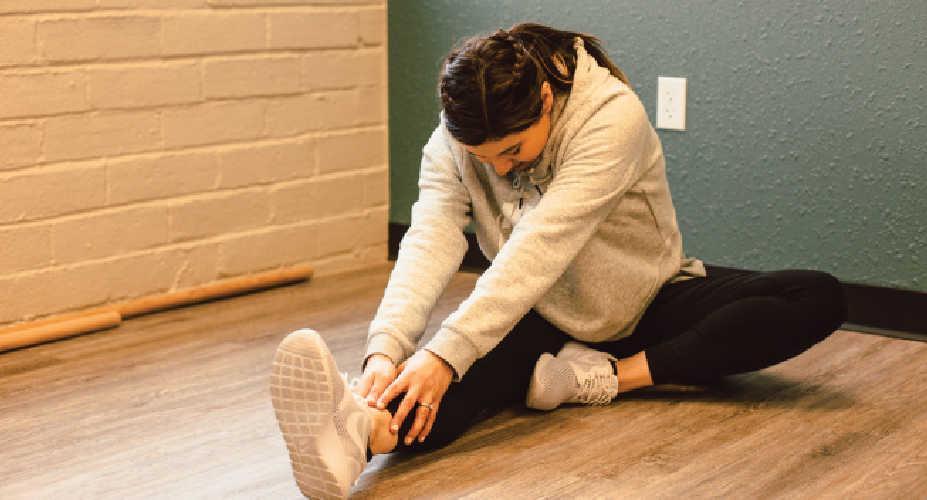
Written by: Paul Langer, DPM. Dr. Langer is a sports medicine podiatrst who treats athletes of all abilities at Twin Cities Orthopedics in Minneapolis, Minnesota. He is the author Great Feet for Life and lectures internationally on the topics of lower extremity health and footwear.
Running is such a popular form of fitness because it is so simple and accessible. All you need is a good pair of shoes, a safe place to run and you are good to go.
Unfortunately, runners sustain a disproportionately high number of overuse injuries compared to people participating in other sports. Read on for information about how to recognize these types of injuries, and what to do about them.
Overuse injuries versus acute injuries in runners
Overuse injuries are unique. Unlike an acute injury (an ankle sprain, for example), overuse injuries do not occur suddenly or with trauma. In their early stages overuse injuries are not painful enough to stop us in our tracks.
Instead, overuse injuries develop gradually over a period of time. It is not one, sudden forceful event that causes the injury but the repetition of thousands of subacute footfalls that can start to overload healthy structures like tendons or bones that then start to break down. The gradual onset of this type of injury is what often makes it mentally difficult for a runner to take a break and address the problem. We all hope that the pain from yesterday’s run will magically disappear by tomorrow.
Risk factors for overuse injuries
Running is very repetitious. The average runner takes 1,000 to 1,500 steps per mile and lands with 2.5 to 3 times their body weight with every step. Often we run in relatively straight lines, on flat, man-made surfaces at relatively constant paces. Unless you change your pace and/or run off road, each footstep is very similar to the one that came before it, step after step, mile after mile, day after day. This combination of repetition, load and lack of variability are risk factors for overuse injuries. When you add in things like training errors and poor strength or flexibility, the risk factors keep multiplying.


Fortunately, injury risks can be managed very well with some common sense and discipline. We want to be able to recognize the injury, understand the contributing factors and then come up with both short-term and long-term treatment options to ensure a complete recovery and return to running, while minimizing the risk of recurrence.
A common overuse injury: plantar fasciitis
Let’s use a common running injury, plantar fasciitis, as an example of how to recognize and respond to an overuse injury.
The plantar fascia is a tough band of tissue that originates on the bottom of the heel and attaches to the bottoms of each of the five toes. It functions to stabilize the arch of the foot when we stand and is under the highest load when our heel lifts to transfer weight to the forefoot during walking and running gait. If the plantar fascia is overloaded it can start to break down. The pain that results is felt in the heel and/or arch and is called plantar fasciitis.
Why do people get plantar fasciitis? There are several likely causes – training errors (ramping up mileage too rapidly, inadequate recovery), inadequate footwear (worn out or not suitable for mileage or gait), weakness of the foot muscles or tightness of the calf muscles are common causes.
Short term relief for plantar fasciitis
After recognizing the injury, the first step is to stop the activity that set it off, manage pain with icing and, if necessary, use NSAIDs like ibuprofen. Symptomatic management will not resolve the injury alone but can help prevent it from worsening quickly.
Long term treatment and prevention of plantar fasciitis
Assess your training routine especially looking for any recent changes, like a change in footwear, increased mileage or intensity, additional activities, even a change in work duties as possible contributing factors. Fortunately approximately 80% of those with plantar fasciitis can resolve the pain with arch support and gentle stretching. Dr. Reed Ferber & colleagues published a paper that showed using a semi-rigid insole can relieve strain on the plantar fascia by 25-35%. Other researchers have found that stretching the Achilles tendon and the plantar fascia daily can reduce pain. For initial treatment of plantar fasciitis I start all of my patients with these recommendations.
If my patients are able to run pain free with these changes then I keep them running. If they still have pain then I advise them to cross train until pain resolves.
For long-term management and to decrease risk of recurrence, I also have patients also start a foot strengthening program so that the muscles of the feet provide better support and stabilization of the foot in gait.


The health benefits of running far outweigh the risk factors for injury but being aware, managing the risks and responding quickly will help runners enjoy more miles injury free.
For prevention and relief from common running injuries. like plantar fasciitis, try Superfeet RUN Pain Relief Insoles. For casual and dress footwear, Superfeet EVERYDAY Pain Relief Insoles are a good choice to help prevent and treat conditions like plantar fasciitis.






